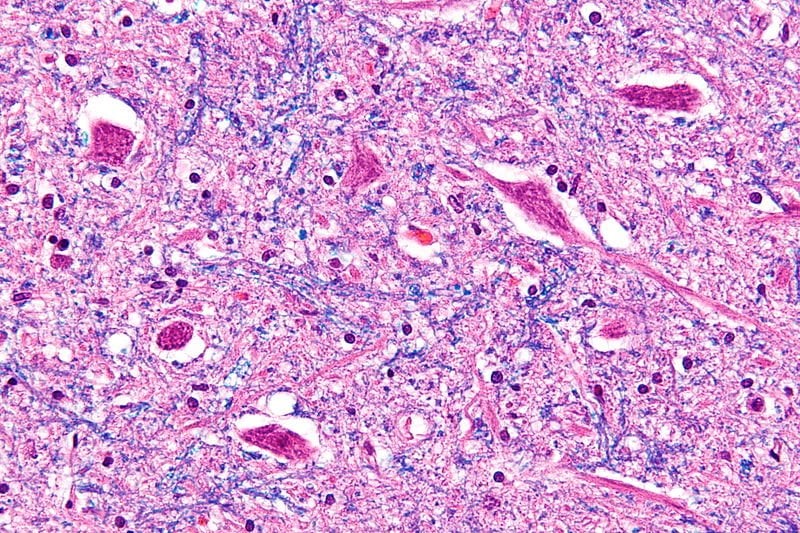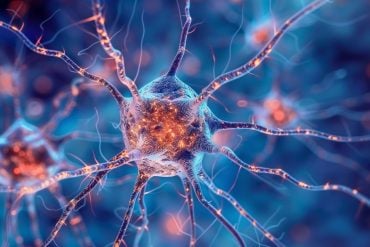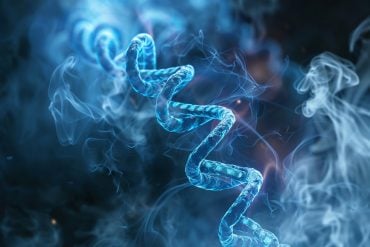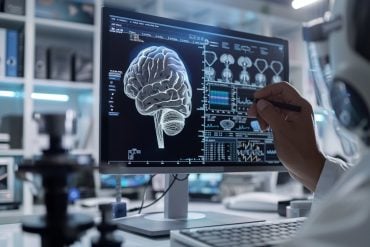Researchers report they can generate human motor neurons from stem cells much more quickly and efficiently than previous methods allowed. The finding, described in Nature Communications, will aid efforts to model human motor neuron development, and to understand and treat spinal cord injuries and motor neuron diseases such as amyotrophic lateral sclerosis (ALS).
The new method involves adding critical signaling molecules to precursor cells a few days earlier than previous methods specified. This increases the proportion of healthy motor neurons derived from stem cells (from 30 to 70 percent) and cuts in half the time required to do so.
“We would argue that whatever happens in the human body is going to be quite efficient, quite rapid,” said University of Illinois cell and developmental biology professor Fei Wang, who led the study with visiting scholar Qiuhao Qu and materials science and engineering professor Jianjun Cheng. “Previous approaches took 40 to 50 days, and then the efficiency was very low – 20 to 30 percent. So it’s unlikely that those methods recreate human motor neuron development.”

Qu’s method produced a much larger population of mature, functional motor neurons in 20 days.
The new approach will allow scientists to induce mature human motor neuron development in cell culture, and to identify the factors that are vital to that process, Wang said.
Stem cells are unique in that they can adopt the shape and function of a variety of cell types. Generating neurons from stem cells (either embryonic stem cells or those “induced” to revert back to an embryo-like state) requires adding signaling molecules to the cells at critical moments in their development.
Wang and other colleagues previously discovered a molecule (called compound C) that converts stem cells into “neural progenitor cells,” an early stage in the cells’ development into neurons. But further coaxing these cells to become motor neurons presented unusual challenges.
Previous studies added two important signaling molecules at Day 6 (six days after exposure to compound C), but with limited success in generating motor neurons. In the new study, Qu discovered that adding the signaling molecules at Day 3 worked much better: The neural progenitor cells quickly and efficiently differentiated into motor neurons.
This indicates that Day 3 represents a previously unrecognized neural progenitor cell stage, Wang said.
The new approach has immediate applications in the lab. Watching how stem cells (derived from ALS patients’ own skin cells, for example) develop into motor neurons will offer new insights into disease processes, and any method that improves the speed and efficiency of generating the motor neurons will aid scientists. The cells can also be used to screen for drugs to treat motor neuron diseases, and may one day be used therapeutically to restore lost function.
“To have a rapid, efficient way to generate motor neurons will undoubtedly be crucial to studying – and potentially also treating – spinal cord injuries and diseases like ALS,” Wang said.
Contact: Diana Yates – University of Illinois at Urbana-Champaign
Source: University of Illinois at Urbana-Champaign press release
Image Source: The image is credited to Nephron and is licensed Creative Commons Attribution-Share Alike 3.0
Original Research: Abstract for “High-efficiency motor neuron differentiation from human pluripotent stem cells and the function of Islet-1” by Qiuhao Qu, Dong Li, Kathleen R. Louis, Xiangzhen Li, Hong Yang, Qinyu Sun, Shane R. Crandall, Stephanie Tsang, Jiaxi Zhou, Charles L. Cox, Jianjun Cheng and Fei Wang in Nature Communications. Published online March 13 2014 doi:10.1038/ncomms4449






